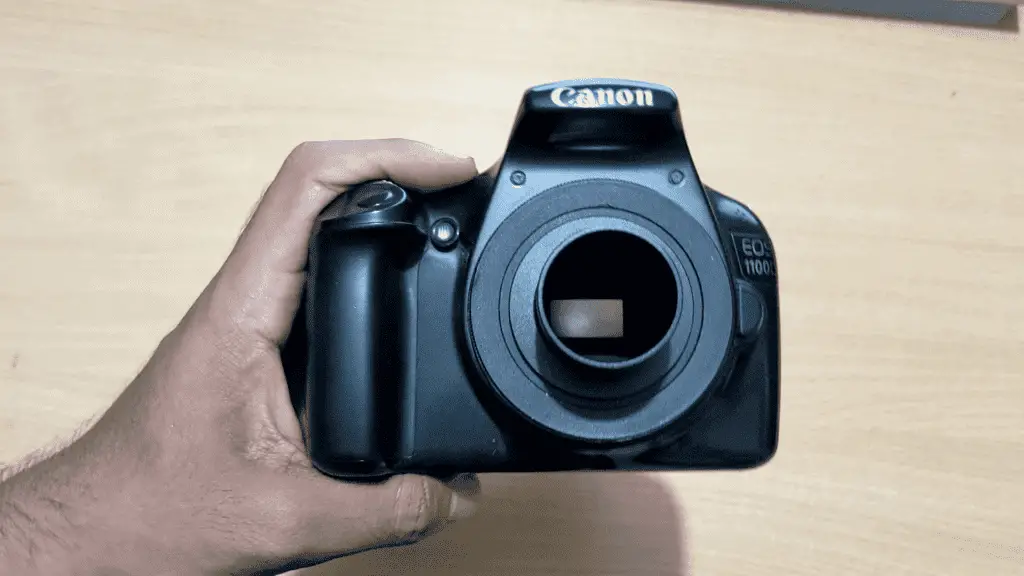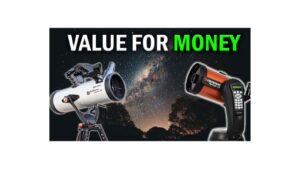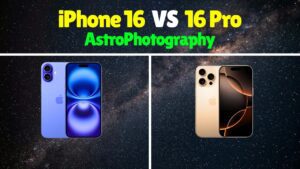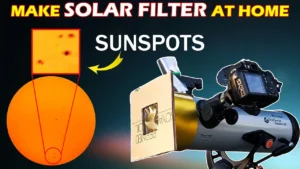
When it comes to attaching a camera to your telescope, it is not just a simple task. You need some adapters to attach your camera with your telescope. To attach a DSLR or a Mirrorless camera to your telescope you will need a two components T-ring and a T-adapter. You can also attach a barrel extender, but it is not necessary.

T-ring
The T-rings are camera-specific. So don’t just buy any T-rings. You will need to know if the T-ring is compatible with your camera brand. For example, if you have a Canon camera, you need to buy the T-ring according to your particular Canon camera model. If you have a Nikon or Sony camera, then you need to buy a T-ring compatible with those camera.
For example, this T-ring is compatible with Canon 1100d, 1200d, 625d and EOS series models. One side of the t-ring connects to the camera, and the other side connects with the t-adapter, which ultimately connects with the telescope. The camera side of the T-ring is designed to connect to the front flange of the camera, where you fit the camera lens. Each camera manufacturer has their own design of these flanges; that’s why the t-ring design also changes. This is the reason you need to buy the exact t-ring that fits your camera model.

The ‘telescope side’ of the T-ring has a female threaded aperture. These threads are usually M42x0.75 threads. They are the most common and are often called ‘T-thread’. Before buying a T-ring, make sure you know it’s thread size and that it matches the adapters and accessories you’re trying to interface with your camera. The next part is the T-adapter.
T-adapter
The T-adapter fits on the telescope side of the t-ring. They also come in different barrel sizes. The most common are the 1.25-inch and 2-inch barrel sizes. For most telescopes, a 1.25-barrel size is suitable, but before buying, check whether will it fit in your telescope.

Using T-ring assembly
Now you can use this assembly in two ways with your telescope. The first method is to use the camera as an eyepiece and take pictures. You can also use a Barlow lens and fit the camera assembly into the Barlow lens.
The second method is to remove the eyepiece assembly at the back of the telescope and directly attach the camera. When you attach a camera to your telescope as shown in the following picture, your telescope will act as a big camera lens.

You can also use a Barlow lens and attach your camera to the Barlow for more magnified views. Now while clicking photos with your hand when you press the shutter button the whole assembly will vibrate. You want to avoid these vibrations to get better pictures. If your camera has Bluetooth, you can control your camera with your phone with the help of any app.
If your camera doesn’t have Bluetooth, then you need to use an intervalometer. So that the pictures you click are free of vibrations Or you can use the timer function in your camera and click multiple images.
Finding Specific T-ring
These T-rings changes a lot even for the same brand. For example, there are different series of cameras canon manufactures. So if the t-ring is compatible with the EOS series canon camera then the same t-ring might not be compatible with any other series of canon cameras. This is because these companies use different camera flanges for different series.
If you are not able to find a specific T-ring for your camera, then you need to know what type of lens mount your camera has. There are very common base mount types for each company. Here is a list of the lens mounts used by popular companies and the T-ring adapter compatible with them.
| Camera Brand | Camera Model | Camera Mount | Compatible T-ring |
| Canon | 1D series: EOS-1D X Mark III, EOS-1D X Mark II, EOS-1D C 5D series: EOS 5D Mark IV, EOS 5D Mark III, EOS 5D S 6D series: EOS 6D Mark II, EOS 6D 7D series: EOS 7D Mark II, EOS 7D Rebel series: EOS Rebel T8i, EOS Rebel T7i, EOS Rebel SL3 | Canon EOS EF/EF-S | BUY |
| Canon | Canon EOS M,M2,M3,M5, M6, M6 Mark II, M10, M50, M100, M200 | Canon EOS-M | BUY |
| Canon | Canon EOS R3, R5, R6, R, Ra Canon APS-C: EOS R7, R10, R50 | Canon EOS-R/RP | BUY |
| Fujifilm | X-A series: X-A1, X-A2, X-A3, X-A5, X-A7, X-A10, X-A20 X-E series: X-E1, X-E2, X-E2s, X-E3, X-E4 X-H series: X-H1, X-H2, X-H2S X-M series: X-M1 X-Pro series: X-Pro1, X-Pro2, X-Pro3 X-S series: X-S10, X-S20 X-T series: X-T1, X-T2, X-T3, X-T4, X-T5, X-T10, X-T20, X-T30, X-T30 II, X-T200 GFX series (medium format): GFX 100, GFX 100S, GFX 50S, GFX 50R | Fuji X | BUY |
| Nikon | Film SLRs: F, F2, F3, F4, F5, F6, F80, F90, F100, N60, N80, N90, Digital SLRs: D1, D1X, D2X, D2Hs, D3, D3S, D3X, D4, D4S, D5, D6, D700, D800, D810, D7500 Mirrorless cameras: Df | Nikon F | BUY |
| Nikon | Nikon Full-frame: Z9, Z8, Z7 II, Z7, Z6 II, Z6, Z f Nikon APS-C: Z 50, Z fc, Z 30 | Nikon Z | BUY |
| Pentax | Pentax Film SLR: K1000, ME Super, MX, LX, Super Program Digital SLR: K100D, K-30, K-50, K-70, K-1 Mark II, KP | Pentax K | BUY |
| Sony | Sony Full-frame Mirrorless: Alpha 1, 7 IV, 7R V, 7R IV, 7R III, 7S III, 7C, 7R II, 7S II, 7S, 7, 9 II, 9, FX3 Cinema Line, FX30 Sony APS-C Mirrorless: Alpha 6600, 6400, 6100, 6500, 6300, 6000, ZV-E10 | Sony E | BUY |
| OLYMPUS | OM System: OM-1, OM-D E-M1 III, E-M1X, E-M5 III, E-M10 IV, E-M10 III, E-M10 II, E-M5 II, E-M10 PEN series: PEN-F, EP7, EP5, E-PL10, E-PL9, E-PL8, E-PL7, E-PL6, E-PL5, E-PL3, E-PL2, E-PL1 | OLYMPUS | BUY |
If your camera model is not mentioned in the above list or if you still do not know which T-ring you need, then you need to talk to the seller of these astronomy instrument shops. Usually, these sellers are astronomy enthusiasts, and they most probably know whether your camera is compatible with the t-ring they are selling. You can easily find the adapters for Canon, Nikon, and Sony cameras, as they are most commonly used and are widely available.
So before buying these adapters, check everything so that you won’t end up getting the wrong one. If you want to learn more about astronomy and telescopes then check out our website and YouTube channel.





